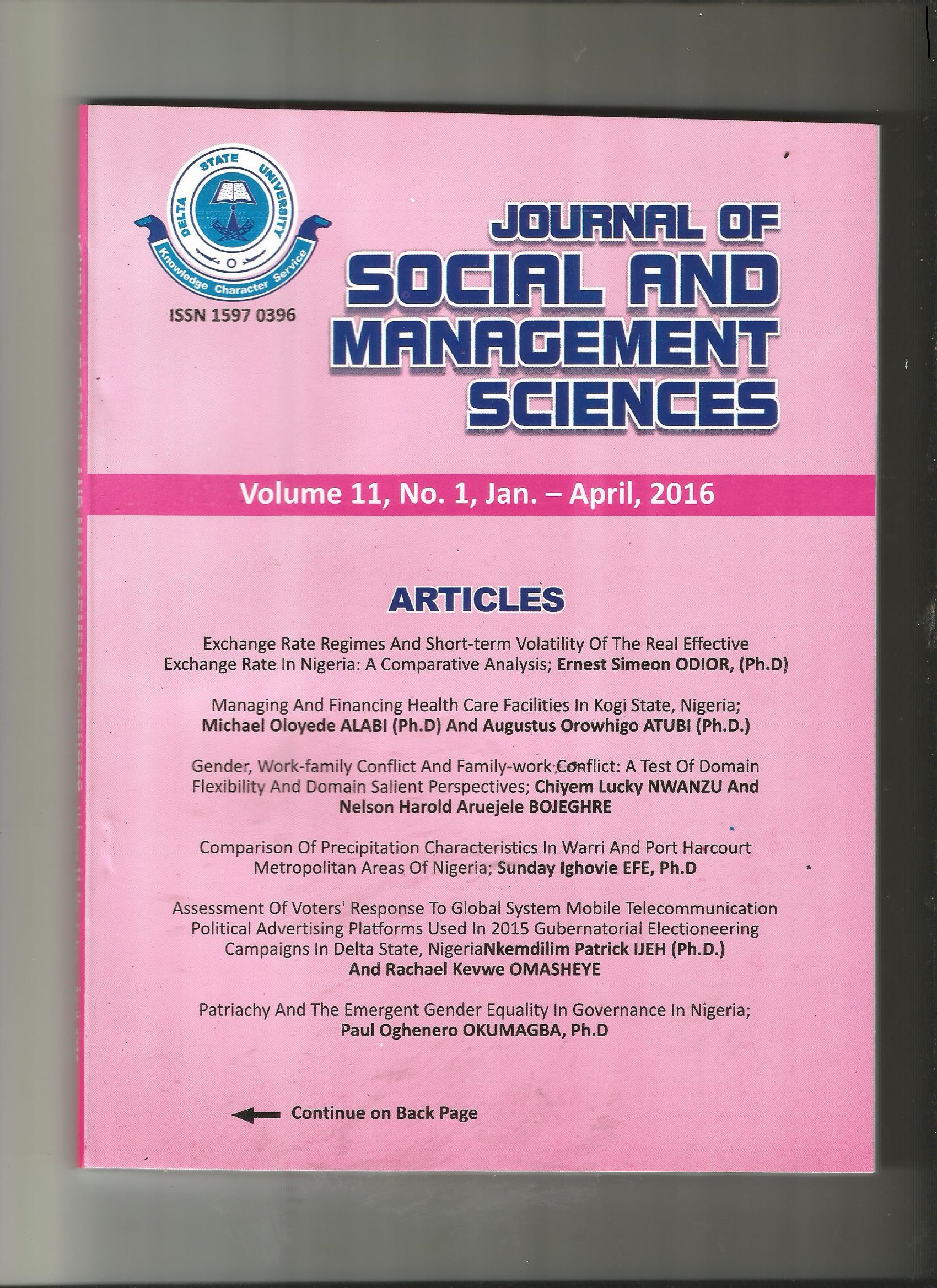
JOURNAL OF SOCIAL AND MANAGEMENT SCIENCES
Journal of the Faculty of Social Sciences, Delta State University, Abraka, Nigeria
ISSN: 1597-0396
DOI: 10.5987/UJ-JSMS
Email: jsms@universityjournals.org
PREFERENCE OF TRADITIONAL BIRTH ATTENDANTS TO ORTHODOX MATERNAL SERVICES BY WOMEN IN UKWANI LOCAL GOVERNMENT AREA, DELTA STATE
DOI: 10.5897/UJ-JSMS.16.008.1 | Article Number: DCC52E8 | Vol.10 (3) - September 2015
Author: MUKORO Ufuomaoghene Jemima
Keywords: Orthodox Maternal Delivery, Traditional Birth Practices, Maternal Services, Midwifery, Nursing
This study evaluated the preference of traditional birth attendants to orthodox maternal and child health services by women in Ukwani Local Government Area of Delta State, and how it has affected the utilization of these services, with the view to exploring modalities and strategies for effective utilization of the orthodox services. It is a survey utilizing the multistage sampling technique to select four (4) communities and six hundred (600) respondents. Questionnaires were used for data collection, while descriptive statistics were used to analyze data. The study revealed that majority (50%) of respondents were between the ages of 18-27years, 60% of respondents indicated preference for traditional birth attendants, while 70% cited cheaper services and easier accessibility as reasons for preference of traditional birth attendants. The study recommends among other things the need to initiate community reproductive health programs in order to sensitize women and give correct information to guide them in making informed choices, the need to introduce or reinforce existing domiciliary midwifery, in order to bring the orthodox maternal and child health care closer to the people, the need for Government to make the services affordable and that primary health care sector should focus on ensuring drugs and supplies needed for effective maternal and child health services are always sufficiently stocked, these would serve as incentives for women to patronize these services and consequently reduce the present maternal and child morbidity and mortality rates.
